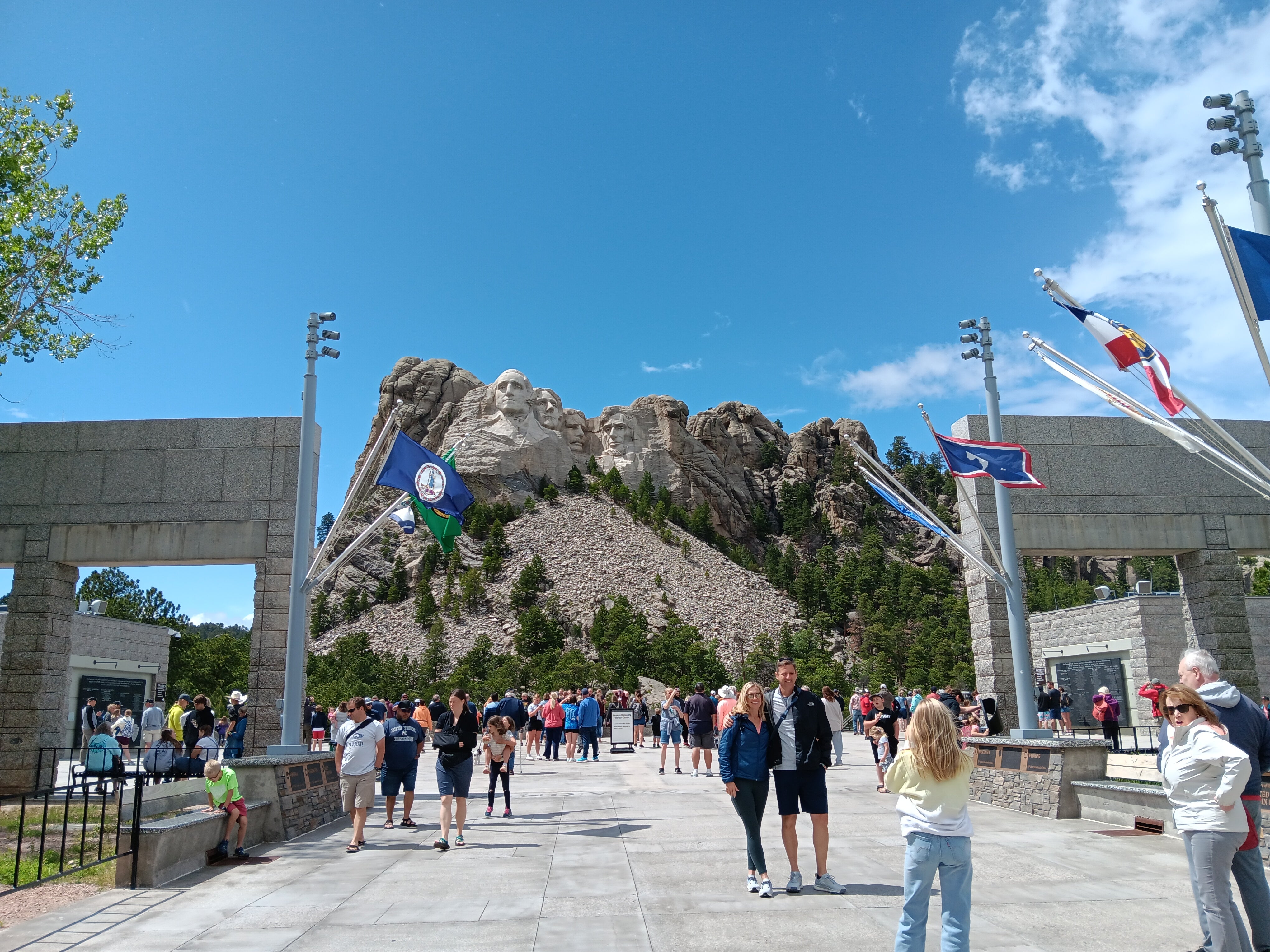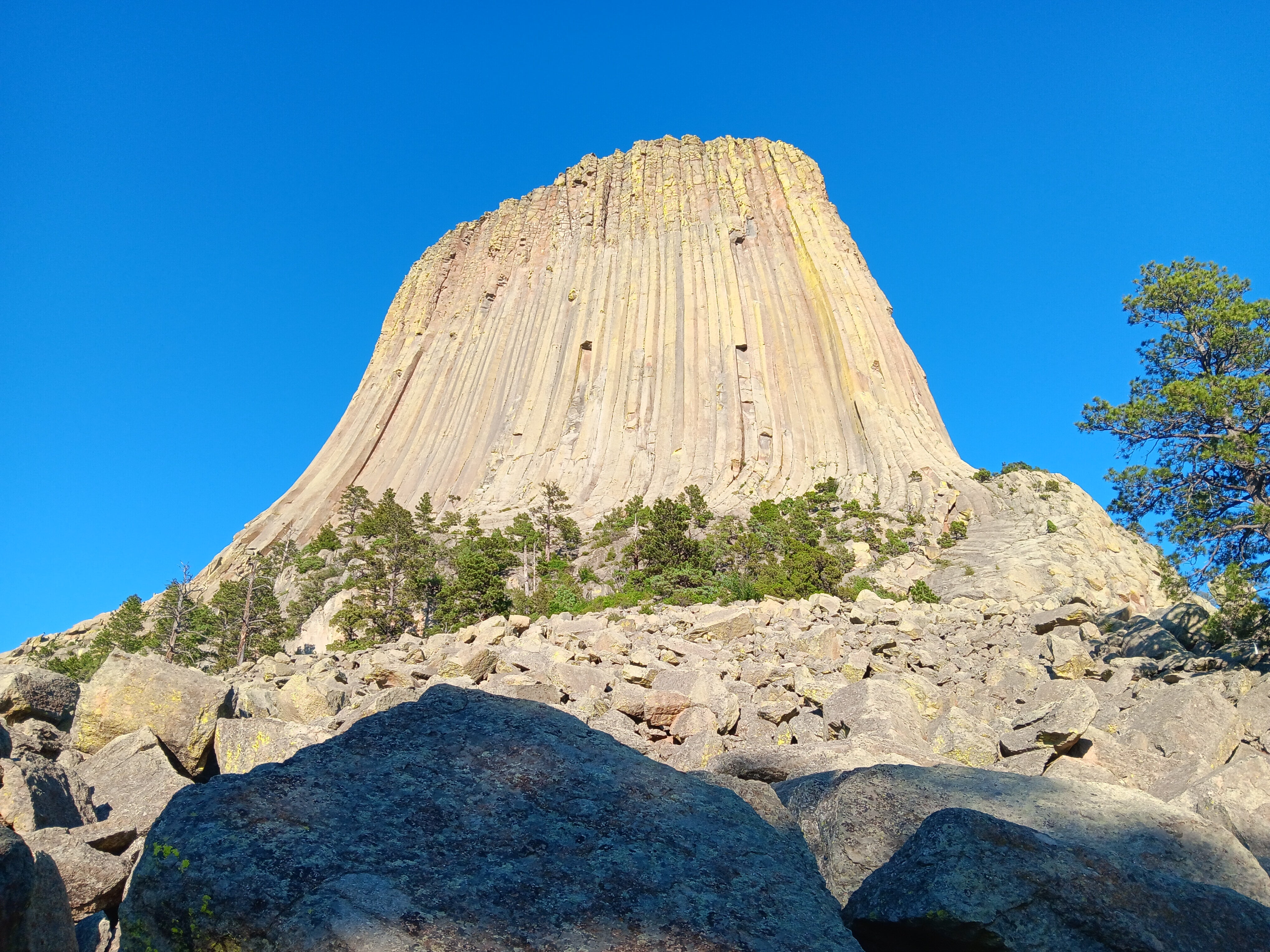How to do the great American road trip: Minnesota to Montana
In this exclusive series, Simon Veness and Susan Veness share diaries of their travels by RV as they take on the ultimate US adventure. In part two, they make their way west through the Dakotas to the open prairies of Wyoming and Montana

Your support helps us to tell the story
This election is still a dead heat, according to most polls. In a fight with such wafer-thin margins, we need reporters on the ground talking to the people Trump and Harris are courting. Your support allows us to keep sending journalists to the story.
The Independent is trusted by 27 million Americans from across the entire political spectrum every month. Unlike many other quality news outlets, we choose not to lock you out of our reporting and analysis with paywalls. But quality journalism must still be paid for.
Help us keep bring these critical stories to light. Your support makes all the difference.
The bison looked us squarely in the eyes, as if to weigh up the value of a full-on assault or just a passing interest. Only a teenager in bison years, his curiosity seemed satisfied by his show of bravado and he wandered on with the herd, grazing into the distance.
Read part one of Diaries from the Road here
We had stopped in the heart of Theodore Roosevelt National Park, our first look at the Badlands of North Dakota, a unique geological feature forged by the haphazard erosion of rivers and streams over half a million years. The soft sandstone has been dramatically re-shaped into a landscape of startling colour and formations, with buttes, pillars, ravines and ridges strewn into a chaotic jumble of improbable shapes for miles in every direction.
Amid this fantastically sculpted vista, the several-hundred-strong herd of bison roams the valley floor, the crown jewel in a wildlife portfolio of little and large proportions, from coyotes and the eternally comical prairie dogs to bighorn sheep, pronghorn, mule deer, white-tail deer and feral horses.

The bison rule the roost, of course. Weighing up to 2,000lb and standing 6ft at the shoulder, they are hard to deny. Which left us holding our breath – and our normally barkative labrador holding her tongue – when our car was surrounded by the herd hoovering its way alongside the Little Missouri River.
We had arrived by way of Fargo and Bismarck, leaving Minnesota in an arrow-straight drive due west along motorway I-94 that had our trusty Winnebago RV purring through the 415 miles. We have dubbed her ‘‘Indefatigable’’, or Fati for short, for the way she presses on relentlessly, her Ford V10 engine making light of the 11-ton load across the 3,000-mile stretch of the US we have crossed in barely two months.
Read more on USA travel:
Towing our little Ford Fiesta, Nippy, we have the perfect combination of long-distance home and short-distance scurrier, using the car to explore once we pitch camp.
That mix saw us stay at the delightful Diamond Rose Ranch family farm in Park Rapids, Minnesota, and visit Lake Itasca and the headwaters of the Mississippi, then drive to Bemidji, home of Paul Bunyan and Babe the Blue Ox, two literal larger-than-life figures from American folklore.
The gentle folds and rolling contours gradually gave way to the beguiling Badlands on one hand, and the mountainous Black Hills on the other
Fargo yielded the chance to pose by the infamous wood-chipper from the eponymous film, as well as enjoy breakfast at signature local deli BernBaum’s and stay at secluded 4e Winery, while Bismarck offered Hillcrest Acres RV Park, ideally situated to explore the state’s extensive native American history.
Like most of the tribes that were summarily dealt with by the US government in the 19th century, the Lakota, Nakota and Dakota suffered a succession of cruel inequities that still resonate today, but interpretive centres such as the Knife River Indian Villages National Historic Site and Fort Abraham Lincoln State Park put things in proper perspective, as did the uniquely informative Journey Museum in Rapid City when we travelled south.
This was the territory of Lakota chief Sitting Bull, leader of the Sioux tribes in the 1870s who sparked the rebellion against enforced removal from their sacred ancestral lands – and led to the infamous Battle of the Little Bighorn, or Battle of Greasy Grass, as it should properly be known from the Lakota naming. Sitting Bull’s memorial in Fort Yates is just one of several sad echoes of the period, which stand as mute sentinels to the deliberate, wholesale dismantling of an ages-old nomadic way of life.

But it wasn’t only the heart-rending back-story of the region that captured our hearts; the landscape did, too. The Dakotas aren’t the largest states in America but they can certainly seem like it thanks to the immensity of open prairie and long, arrow-straight roads that disappear into the far distance like the promise of tomorrow.
The gentle folds and rolling contours gradually gave way to the beguiling Badlands on one hand, and the mountainous Black Hills on the other. From the superbly equipped Heartland RV Park, we spent a week marvelling at this geological assault on the senses, which included the profound pine scents of Black Hills National Forest and the wildlife-rich Custer State Park, where we encountered more bison, bighorn sheep, pronghorn and, yes, even more prairie dogs.
Named for the dark ponderosa pines that appear jet black from a distance, the Black Hills presented a topographical treasure that seemed positively uncanny. Steep, craggy peaks and ancient granite roots combined to create a Hollywood fantasy movie scenario, a mix of Lord of the Rings and Game of Thrones, with a dash of Willow.

Many appear to be carved by some giant Gaudi-esque sculptor, and two are definitely works by human hands. Mount Rushmore National Memorial is the prime masterpiece, the 14-year crowning glory of American artist Gutzon Borglum, featuring four notable presidents in a glorious pageant of patriotic fervour, dimmed only by the knowledge this was a sacred site stolen from the Lakota.
The other example is more of a tribal response and still a work in progress. It aims to portray an idealised 563ft statue of Lakota warrior Crazy Horse – think the Argonath from Lord of the Rings – that is still largely scaffolding but carries the promise of a Native American idol to counter-balance those on Mt Rushmore. As Lakota Chief Henry Standing Bear said in 1948: “My fellow chiefs and I would like the white man to know that the red man has great heroes also.”
The Black Hills stronghold of Sturgis – home of the world’s largest motorcycle rally every August – opened the way to the gold rush centres of Deadwood, Lead and Spearfish, iconic names in the Western folklore of South Dakota, but we preferred the town of Custer, where we sampled rattlesnake bratwurst (mixed with rabbit and pork; an acquired taste indeed) at the downhome Mt Rushmore Brewing Company.
The horizons expanded in mind-numbing enormity, the vast, open prairie mixing with ranches bigger than the Isle of Wight
If we thought the Dakotas were immense, our year-long journey continued west to Wyoming and Montana, where the epic widescreen panoramas dwarfed anything we had seen thus far. From the elevated vantage point of Fati’s cab, the horizons expanded in mind-numbing enormity, the vast, open prairie mixing with ranches bigger than the Isle of Wight.
Our second month concluded with a poignant, sobering visit to the Little Bighorn Battlefield, where Sioux history is given equal prominence and Last Stand Hill is mute testament to tragic political and military blunders, as well as a chance to marvel at Devils Tower, better known as the iconic mountain backdrop for Close Encounters of the Third Kind.
We discovered another Harvest Host gem in the shape of the Galloway ranch of YouTube fame as Our Wyoming Life, with a community-focused approach to farming, and the 19th-century railroad town of Livingston, where Starry Night Lodging proved the perfect base from which to start our exploration of the mighty Beartooth Mountains – and the gateway to magnificent Yellowstone National Park.

For dinner, we simply followed the locals, straight to Mark’s In-And-Out Beefburgers, a classic 1950s drive-in diner that serves succulent burgers, shakes and hot dogs, as well as Wilcoxson’s ice cream, which has been a Livingston staple since 1914.
We reserve special mention, though, for the Red Trail Campground in Medora, North Dakota. Located on the doorstep of Theodore Roosevelt National Park, it gave us the chance to return each evening to catch the wildlife at its wildest, which included coyotes hunting the prairie dogs, feral horses on the gallop, bighorn sheep basking in the setting sun and bison moving inexorably en masse back to the upper plain. A visual hymn to nature’s own masterwork.
Next stops: Yellowstone and Glacier National Parks.
How to do it
RVing 101
- Take your time. Nothing happens fast in an RV, from driving to setting up camp. Don’t try to rush anything or you risk missing something important (like driving off with the electric line still attached).
- Have a checklist for setting up camp, and packing it all up again. It’s vital you follow the checklist each time.
- Don’t feel the need to put your foot down in an RV; 60mph is plenty fast enough and, if the traffic behind you has a problem with it, it’s their problem, not yours. Focus on the road ahead, not behind.
RV factfile
- For the best of our Dakotas/Montana/Yellowstone route, see theIcons and National Parks of the Great American West tour with Cruise America.
- A great planning and resource app is called The Dyrt.
- When things go wrong, consult myrvresource.com.
- For Harvest Host places to stay, see harvesthosts.com.
Read more on the best USA hotel reviews
Join our commenting forum
Join thought-provoking conversations, follow other Independent readers and see their replies
Comments